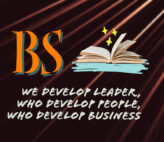Human Resource Management
Human Resource Management is All about managing the manpower in an organization. where they are responsible for maintaining all the policies, procedure , and rules and regulations followed in organization and also to control all the manpower to accomplish it and to follow it in a right way.
Human Resource is not only about maintain rules and regulation and policies and procedure, they are also responsible for Recruitment, Selection, Onboarding Induction etc.,

Significance of HRM: Human Resource are the most precious asset of an organization. They are the activities of non-human resource, mean for developing competitive advantage and sources of creativity .
Organizational Significance: An effective HRM allows Organization to tackle human resource issues strategically. HRM supports in attracting and retaining competent employees, helps the organization’s leaders and employees in adapting to organizational change, and enables the adoption of technology.
Social Significance: HRM is responsible for satisfying their employee in the organization, by concentrating on their social welfare activities and their effectiveness.
Professional Significance: developing people and providing healthy environment for effective utilization of their capabilities. This can achieved through providing a development training continuously for meeting their challenge in job.
HRM Environment: HRM Environment is said to be the Surrounding that happens within and outside the organization in managing the human resource. It can be Categorized into two different sides,
Internal Environment.
External Environment.

Internal Environment: IT describe all the happenings that occurs inside the organization. The Internal HRM comprises of Organizational Conflicts, Unions, Professional Bodies, Organizational Objective, Policies, etc.,
Organizational Culture & Conflicts: Each Organization Has its own Culture, which cherishes and want to retain and follow in a faithful manner. Conflict usually happens because of dualities such as personal goals, vs, Organization goals, discipline vs duties etc.,
Professional Bodies : An organization with individual members practicing a professional or occupation in which the organization maintains an oversight of the knowledge, skill, conduct and practices of the profession or occupation.
External Environment: It describes all the happenings that occurs outside the Organization. The External Environment Comprises of Economic, Policies, Technological and Demographic Factors.
Economic Factors: Economic factors Determines the growth rate and the strategy of an organization development, and also it contains capital market, money, incomes, competition, industrial labor and globalization etc.,
Political Factors: It is composed of Legislature, executive and judiciary and all of them have impact on placement, training retention and maintenance of employees.
Technology: Technology makes the job more intellectual or upgraded. Secondly, it renders workers dislocated, if they do not equip themselves to the job. thirdly job becomes challenging for the employees who cope with the requirements of technology.
Demographic: Variables include Sex, age, literacy, mobility etc. All these have different dimensions in employment and placement.
